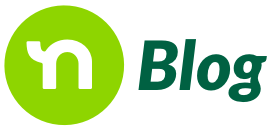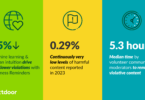September is National Preparedness Month, and it’s time to start planning with your neighbors.
Led by our partner, the Federal Emergency Management Agency (FEMA), National Preparedness Month is dedicated to educating and empowering Americans to prepare for emergencies that may take place in our homes, workplaces, schools, and communities. All month long, we’ll be featuring content to help you and your neighbors plan for any emergency, big or small.
Our thoughts are with the neighbors impacted by Harvey. To support recovery efforts, please visit the Red Cross.
Individuals and neighborhoods alike are at the core of our nation’s preparedness. According to FEMA, a community’s ability to respond to or recover from a disaster depends on the level of preparedness of each and every neighbor.
However, a 2009 Citizen Corps National Survey showed that 29% of Americans are not prepared, largely due to the fact that over 60% of Americans expect assistance from emergency responders. In the case that first responders and emergency crews aren’t able to reach victims immediately, it is essential that each individual and their family have their own emergency preparedness plan in place.
FEMA laid out the following steps to make sure that every neighbor is prepared in the face of potential danger:
- Put together a plan by discussing important questions with your household. Sit down with your family or loved ones and ask yourself if you’re adequately prepared. For example, consider how you will receive emergency alerts and warnings in a time of crisis, whether it’s through an online platform like Nextdoor or through a reverse 911 alert. Consider if you have a shelter plan and evacuation route in place, and how you and your family will communicate. Finally, consider your financial options in the case of an emergency or disaster, such as considering if you have insurance coverage or property insurance.
- When creating your plan, customize it around your specific household’s needs. Consider the different ages in your family, dietary needs, medical supplies, including prescriptions and equipment, as well as your or your family’s disabilities or access needs. Also take into account any religious and cultural considerations you may have, languages spoken, or pets that may need assistance during an emergency.
- Start to fill out your family emergency plan. Follow this template to best prepare in case of a disaster. Having a formal plan in place and sharing it with every member of your household will ensure that you know how to reach each other, where to meet up, and how to stay safe should an emergency strike.
Neighbors on Nextdoor are no strangers to creating a safety plan prior to an emergency. Earlier this year, when more than 10,000 residents in Northern California were forced to evacuate due to heavy storms threatening to fail the Oroville dam, neighbors took to Nextdoor to warn others about the evacuation orders and track the steadily-increasing water levels.
Using Nextdoor, neighbors shared some of their own safety tips, like filling up their cars with gas, charging cell phones, and packing ready bags that included important documents and medications. Some neighbors outside of the flood zone even offered up their homes to friends and family displaced by the evacuations. Once the immediate danger passed, other neighbors took to Nextdoor to gather donations for those most heavily impacted and in need of materials.
Knowing your neighbors is critical during times of emergency, since they may be the people best equipped to help you when emergency personnel can’t be immediately reached.
Tune in next week for more tips on how to share your plan with your neighbors to keep your community safe.
Join your neighborhood on Nextdoor here.
Do you have a story about how you’ve used Nextdoor in your neighborhood? Let us know.




Leave a Comment